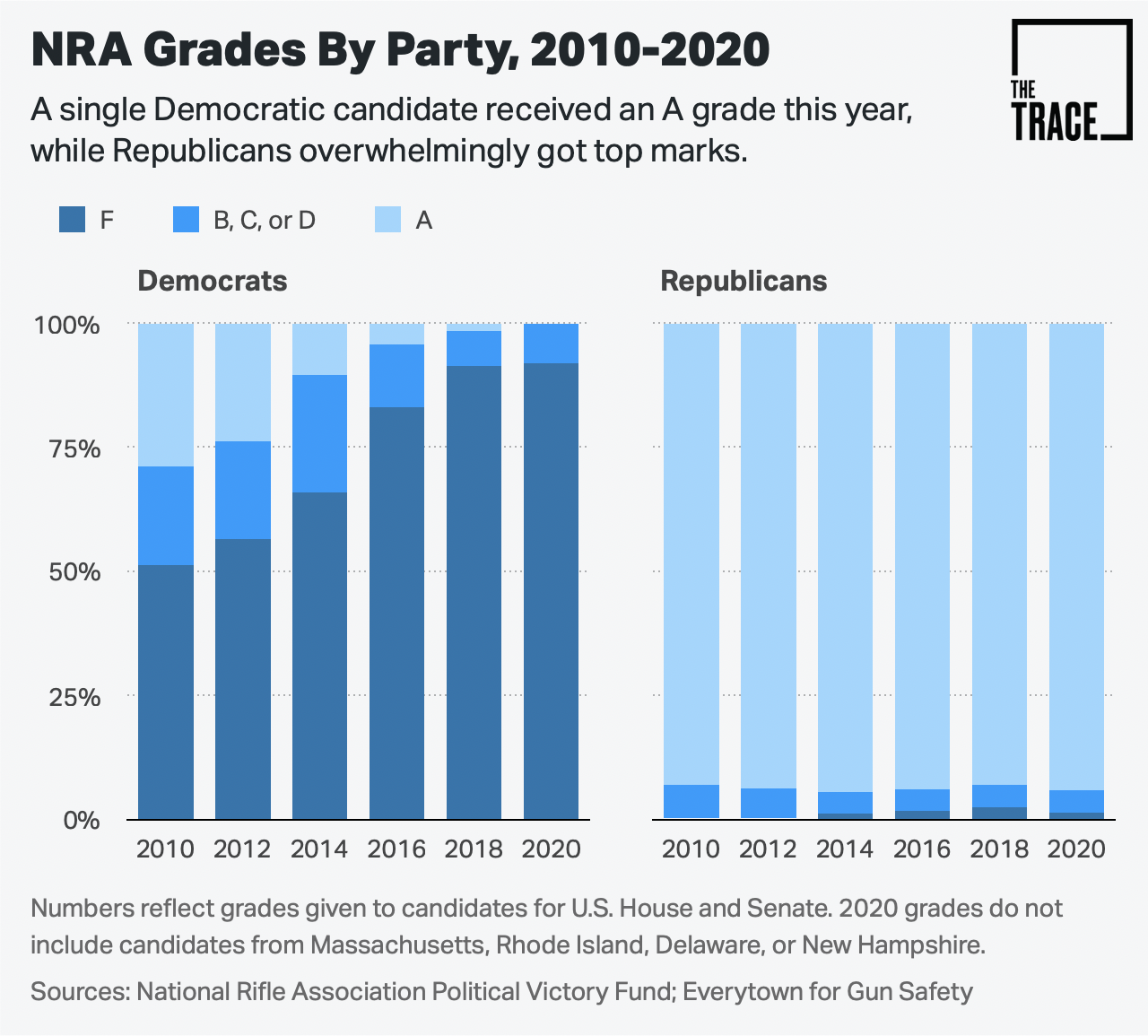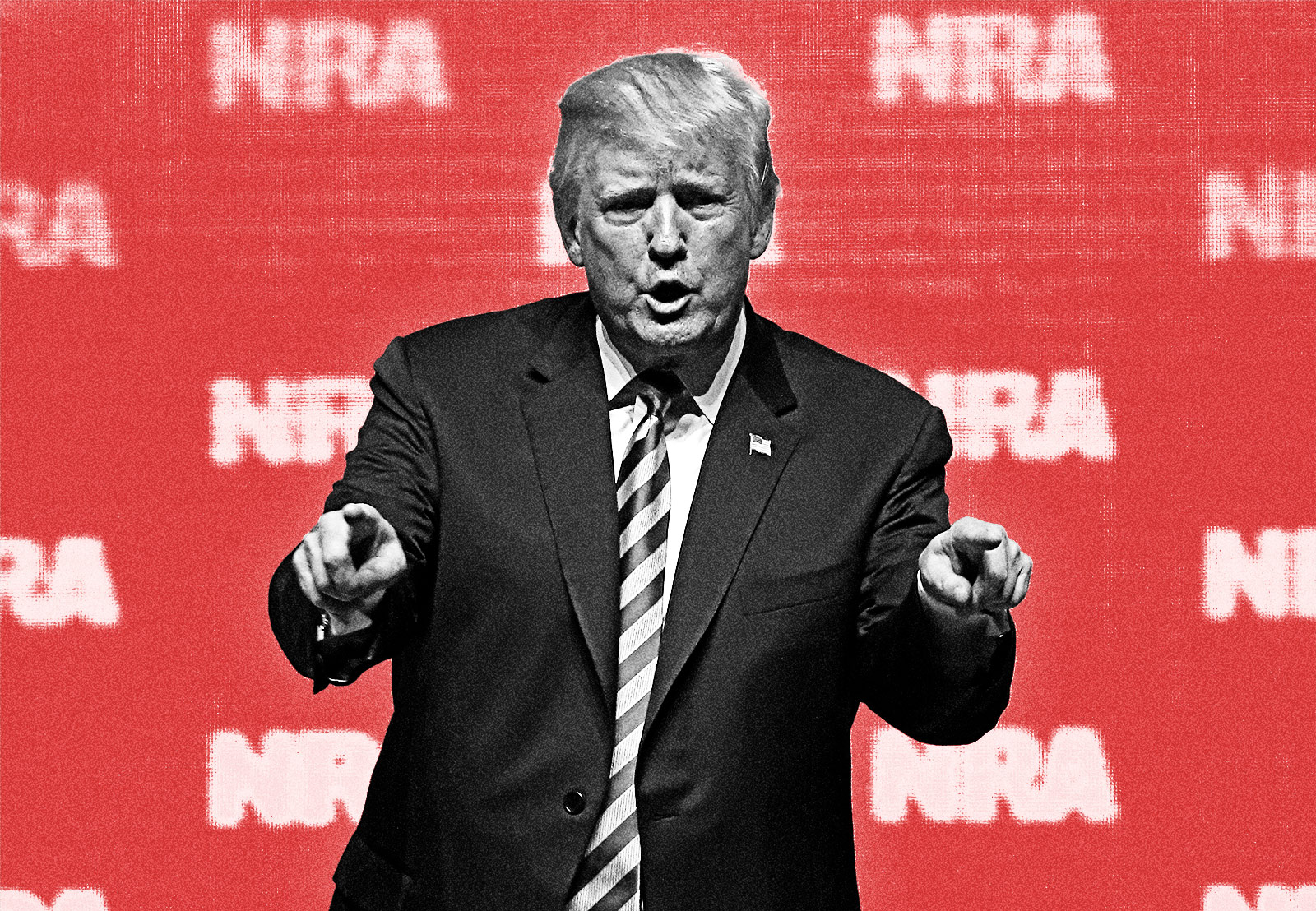Every election, the National Rifle Association issues letter grades to hundreds of candidates running for federal office. A decade ago, these ratings reflected bipartisan support for the gun group’s agenda, but newly released grades for the 2020 election offer a snapshot of America’s widening political polarization.
A lone Democratic House candidate and no Democratic Senate candidates received A grades from the NRA this year, while 92 percent flunked. It’s a dramatic departure from 2010, when more than a quarter of Democrats received A’s. Meanwhile, the share of Republicans with A’s this year is virtually unchanged from past elections, at 94 percent. And the share receiving F’s has fallen to nearly 1 percent, after a slight uptick in 2018. Once a coveted designation that could make or break a campaign, the NRA’s grading system is now mostly a reflection of the country’s ideological divide.

The NRA defines an A-worthy candidate as a “solidly pro-gun candidate… with a demonstrated record of support on Second Amendment issues.” Meanwhile, the recipient of an F is “a consistent anti-gun candidate who always opposes gun owners’ rights.”
Amid widespread calls for gun reform following the 2018 school shooting in Parkland, Florida, the NRA pulled records of its past grades from its website. Everytown for Gun Safety then released an archive of grades spanning 2009 through 2016. (Everytown provides funding to The Trace. Read our editorial independence policy here.) Combined with The Trace’s 2018 grades archive, these past grades allow us to see how the NRA’s favor has shifted over time.
(Click here to download the full set of 2020 grades.)
Eight Republican candidates’ grades fell a full letter or more this year, far fewer than the 15 who were downgraded in 2018. The year’s biggest drops were for Representatives Mike Turner of Ohio and Adam Kinzinger of Illinois, whose grades went from A to D after they backed gun reform measures in the aftermath of mass shootings last summer. Two other incumbent representatives lost their A-grade status as well: Mario Diaz-Balart and Vern Buchanan of Florida received B’s in 2020.
The four Republicans whose grades improved include Senator Susan Collins of Maine (C to B) and Representative Louie Gohmert of Texas (B+ to A-).
Investigating America’s gun violence crisis
Reader donations help power our non-profit reporting.
On the other side of the aisle, nearly 30 Democrats received lower grades in 2020 than the last time they were evaluated. Representatives Sanford Bishop of Georgia and Henry Cuellar of Texas, two of only three Democrats who received campaign contributions from the NRA during the 2018 midterms, saw their ratings drop from A to C. Both backed an expansion of background checks last year.
Minnesota’s Collin Peterson is now the lone A-rated Democrat in Congress. “If I hear the words ‘common-sense gun legislation’ one more time, I’ll throw up,” he said last year.
Other Democratic politicians who bucked the NRA’s agenda include North Carolina Governor Roy Cooper, who fell from B to F after endorsing and enacting several gun safety measures last year, and Virginia Senator Mark Warner, who went from C to F after sponsoring bills to expand background checks and ban assault weapons.
A small handful of Democratic incumbents saw their grades improve a notch or two. Representative Jared Golden of Maine rose from a D to a B, while New York’s Anthony Brindisi and Utah’s Ben McAdams both went from F to D.
The NRA’s wholesale rejection of Democratic candidates could be the result of an evolution of the underlying grading criteria. But it also reflects the party’s growing embrace of gun control. Gun rights measures could once expect a degree of bipartisan support — now, votes on gun measures are strictly divided along party lines. Democratic lawmakers have aligned their platforms with their constituents’ embrace of gun reform policies, many of which enjoy overwhelming bipartisan public support.
Everytown now runs its own database of candidates who “stand up for gun safety.” And the NRA’s status as a campaign finance powerhouse is rivaled by a coalition of gun control organizations with PACs of their own, which outspent the gun group for the first time during the 2018 midterms. Both sides have pledged to throw millions behind their favored candidates in the current election cycle.

